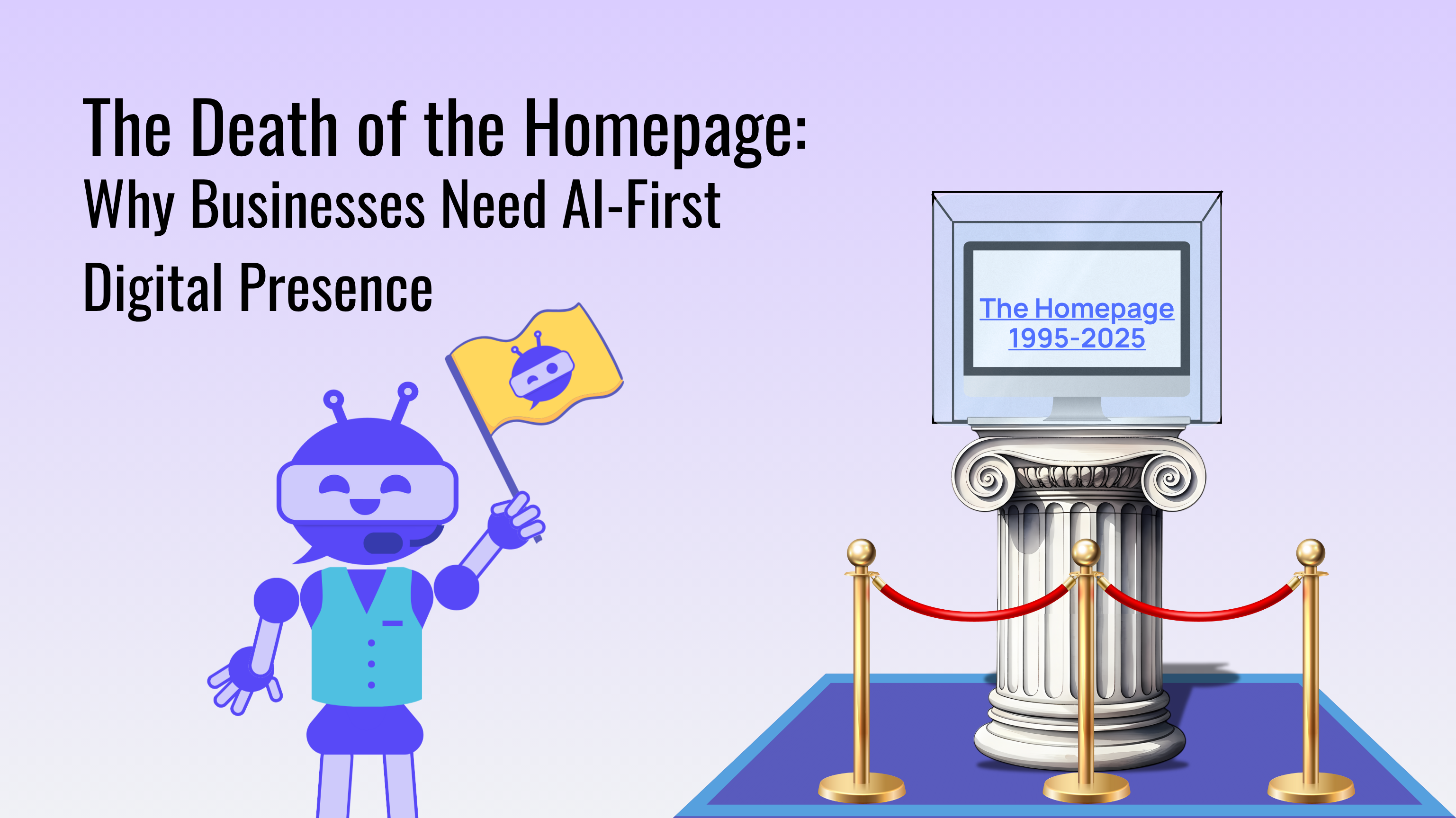
Every business with a website has one, and nearly everyone bounces from it. Industry data confirms what intuition already tells us: homepages capture attention but rarely convert it. Visitors arrive, glance, click once, and leave. Even for large organizations, the average session lasts less than a minute.
Think about what most homepages do. They repeat slogans, cram navigation bars with internal politics, and present walls of text that few people read. The only users who succeed are those who already know what they’re looking for like a phone number, an address, or a donate button. Everyone else has to hunt.
The paradox of design: The homepage was built for everyone and ends up helping almost no one.
AI flips the model. Instead of forcing users to click through pages, they can talk to an agent who knows where everything lives and why it matters. This isn’t science fiction. It’s an architecture shift: a website becomes a model context protocol (MCP) server where all the organization’s knowledge is centralized, structured, and accessible through an AI-accessible interface.
Every page still exists but the AI guide surfaces what’s relevant in real time. The visitor doesn’t have to interpret menus or guess keywords. They can simply ask. And unlike static navigation, the agent adapts to each intent: donor, volunteer, investor, or curious newcomer.
Imagine a nonprofit with multiple causes: food insecurity, youth mentorship, and community gardens. Its homepage lists them all, but visitors get lost between “Learn More,” “Programs,” and “Donate Now.” Even motivated donors often abandon the process halfway through.
Now imagine landing on the same site and being greeted by an AI guide: “Hi, I’m Maya. Would you like to support families, youth, or our garden program today?” The visitor responds, “Families.” Maya walks them through current needs, shows how donations are used, offers volunteer dates, and completes the transaction without a single tab change.
That’s an AI-first experience. It’s focused, human, and built for completion and not confusion.
A small outdoor gear shop wants to stand out against national chains. Instead of a brochure site, its AI colleague welcomes visitors: “Looking for hiking gear, fishing supplies, or a Presque Isle camping kit?” It pulls product recommendations, checks local inventory, and even connects to nearby guides for weekend trips.
Behind the scenes, the same agent is a 24/7 sales associate. It updates knowledge automatically, answers service questions, and keeps data consistent across Google, Yelp, and booking platforms. No one has to “manage” content anymore and the agent simply learns from the organization’s data flow.
Think of it like this: a homepage tells your story once. An agent tells it continuously and personally.
The next frontier isn’t just AI on one site, it's AI across sites. Imagine a “homes page” where multiple guides coexist and collaborate.
A visitor exploring Erie, PA’s attractions could meet a VisitErie guide, who introduces them to an Erie Zoo guide, who then passes them to a Lavery Brewing or Bayfront Inn guide… all within the same experience. Each agent keeps context: what the visitor likes, how long they have, and what they’ve already done. No more bouncing from site to site, guessing which link to trust.
In that model, websites become shared ecosystems of knowledge and service. Each business owns its data and values, but their guides cooperate. It’s how communities build collective visibility and why local discovery will soon depend more on conversations than clicks.
The homepage isn’t dead because design failed. It’s dying because conversation is faster, friendlier, and fundamentally human. People don’t want to browse, they want to be helped.
In the next few years, every organization that wins online will have an AI guide like a digital colleague who knows the work, the mission, and the neighborhood.
When your homepage starts listening, not just loading, you’ll finally have a digital presence that works as hard as you do.




